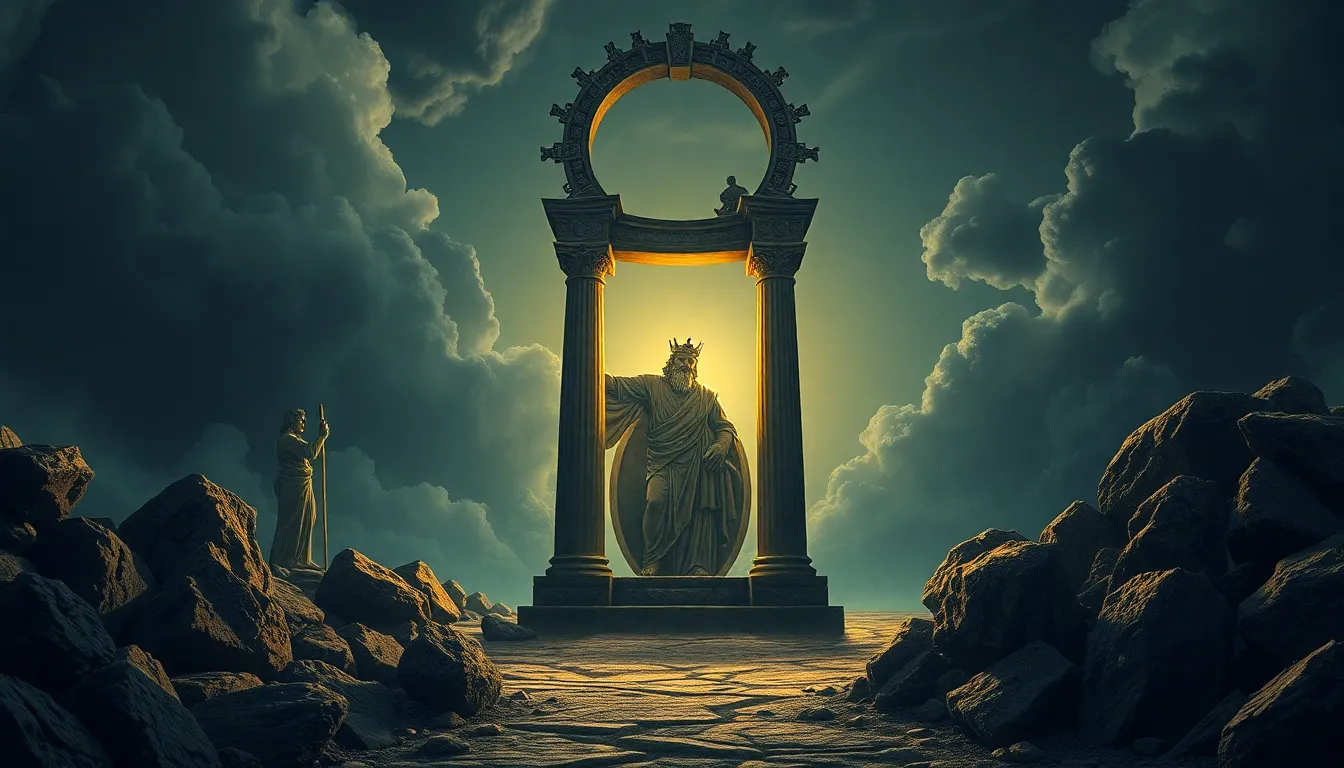The Role of the Cyclops: A Symbol of Craftsmanship and Isolation
I. Introduction
The Cyclops, one of the most intriguing figures in Greek mythology, represents a complex blend of craftsmanship and isolation. These one-eyed giants, often depicted as brutish and uncivilized, possess a duality that reflects both their incredible skills as artisans and the profound solitude they experience in their lives. This article aims to delve into the rich tapestry of the Cyclops’ role in mythology, exploring their significance as craftsmen and their symbolic isolation within the ancient narrative framework.
II. Historical Context of the Cyclops
The origins of the Cyclops in ancient Greek mythology can be traced back to various sources, including Homer’s “Odyssey” and Hesiod’s “Theogony.” In these texts, Cyclopes are depicted as formidable beings, both feared and revered. Over time, the figure of the Cyclops evolved in literature and art, reflecting changing societal values and perceptions.
In early myths, Cyclopes were portrayed as primitive creatures. However, as Greek culture advanced, they began to symbolize more complex themes, such as the intersection of nature and civilization. Their cultural significance in ancient societies is evident through their representation in pottery, sculpture, and literature, where they embody the duality of fear and fascination.
III. The Cyclops as a Craftsman
Despite their fearsome appearance and reputation, Cyclopes were renowned for their exceptional craftsmanship. They were skilled blacksmiths and metalworkers, credited with forging some of the most powerful weapons in mythology.
- Skills in Blacksmithing and Metalwork: Cyclopes possessed unparalleled skills in creating tools and weapons, often utilizing volcanic materials and their immense strength to craft intricate designs.
- The Cyclops’ Contribution to Divine Weaponry: Perhaps their most famous contribution is the creation of Zeus’s thunderbolt, a symbol of divine power and authority. Other notable weapons crafted by Cyclopes include Poseidon’s trident and Hades’ helmet of invisibility.
- Symbolism of Craftsmanship: The craftsmanship of Cyclopes reflects not only their creativity but also their connection to the divine. Their ability to forge powerful weapons symbolizes the intersection of human creativity and divine power.
IV. The Theme of Isolation
The Cyclops are often depicted as solitary beings, living in remote caves away from the bustle of human society. This isolation shapes their character and enhances their mythical narrative.
- Living in Solitude: The typical habitat of a Cyclops is a desolate cave on a remote island, emphasizing their detachment from communal life. This physical isolation mirrors their emotional and psychological state.
- Psychological Implications of Isolation: In mythology, isolation often leads to a distorted perception of reality. For Cyclopes, this solitude can breed a sense of madness or brutality, as seen in the story of Polyphemus, who famously captures Odysseus and his men.
- Contrast with Communal Living: Unlike other mythological figures who thrive in communities, Cyclopes represent the extremes of individualism. Their solitary existence raises questions about the balance between individuality and society.
V. The Cyclops in Modern Interpretations
In contemporary literature and film, the Cyclops has been reimagined in various ways, reflecting modern values and themes.
- Representation in Contemporary Literature and Film: Cyclopes appear in various forms, from fantasy novels to animated films, often depicted as misunderstood beings or tragic figures.
- The Cyclops as a Metaphor for the Solitary Genius: The image of the Cyclops is now often associated with the archetype of the solitary genius—brilliant but isolated, reflecting modern struggles with creativity and loneliness.
- Reimagining Isolation and Craftsmanship: Modern narratives explore the themes of isolation and craftsmanship, showcasing how solitude can lead to profound creativity and innovation.
VI. The Duality of the Cyclops: Fear and Fascination
The Cyclops embodies a duality that evokes both fear and fascination. This complexity makes them one of the most compelling figures in mythology.
- The Cyclops as a Figure of Dread: In stories like that of Polyphemus, the Cyclops is portrayed as a monstrous figure, instilling fear in those who encounter him. His brute strength and cannibalistic tendencies highlight the darker aspects of human nature.
- The Allure of the Misunderstood Craftsman: Despite their fearsome reputation, Cyclopes can also be seen as tragic figures. Their isolation and misunderstood nature invite empathy, showcasing the struggles of those who create in solitude.
- Balancing Fear and Admiration: The portrayal of Cyclopes balances elements of horror with admiration for their skills. This duality reflects broader themes in mythology regarding the nature of humanity and the divine.
VII. Lessons from the Cyclops
The stories of the Cyclopes offer valuable lessons that remain relevant in contemporary society.
- The Value of Craftsmanship in Society: The Cyclopes remind us of the importance of craftsmanship and creativity in society. Their ability to forge powerful weapons symbolizes the impact of skilled labor and innovation.
- Reflections on Isolation and Its Impact on Creativity: The isolation of the Cyclops serves as a metaphor for the creative process, where solitude can lead to both brilliance and madness. It encourages an exploration of how isolation can affect artistic expression.
- The Relevance of Cyclopean Themes in Today’s World: As society grapples with issues of isolation, individuality, and creativity, the lessons from the Cyclops continue to resonate. They challenge us to find a balance between personal expression and community engagement.
VIII. Conclusion
In conclusion, the Cyclops serve as a powerful symbol of craftsmanship and isolation in Greek mythology. Their dual role reflects the complexities of creativity, individuality, and the human experience. As we explore the legacy of the Cyclops, it is essential to appreciate the balance of individuality and community in the pursuit of creativity. The enduring image of the Cyclops reminds us that while solitude can foster genius, it is often the connections we forge with others that truly enrich our lives.




